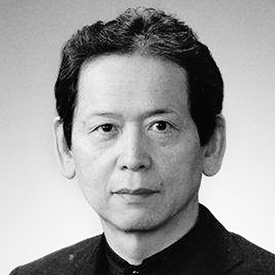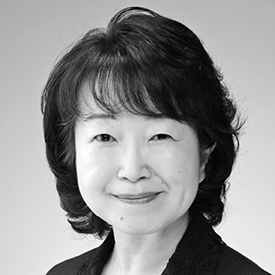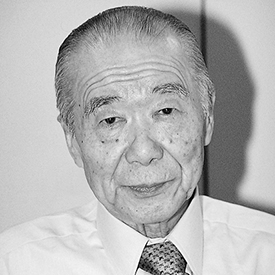Jurors’ comments
on the Preliminary Slide Assessment
審査講評 第一次審査

Jun Fujita (Japan)
- Glass Artist
- Chairperson of Japan Glass Artcrafts
Association
I am pleased that this year marks the 12th anniversary of “the International Exhibition of Glass Kanazawa.” It is 29 years since its inception in 1984. This is the only exhibition where anyone can apply from any countries in the world. If you pass the Preliminary Slide Assessment, you can send your glass work to the Executive Office. I would like to express my respect to the organizers who have continued such a large scaled exhibition considering how many people have worked for and how much money has been utilized.
I was in charge of a juror for the Preliminary Slide Assessment. It took me more than five hours to check all the slides (332 pieces) although the number of applications was smaller than the previous time. I tried to see each slide carefully as a whole and in detail so that I would not fail to notice each work created with great care. The difference between the slides and real works is always a big problem. I sometimes feel that the slide image is better than the real work when I come across the real work for the first time. However, if the slide image is not good, it is impossible to interpret in a better way. I am sorry I have found such slides this time. Even though the number of applications decreased, it is highly competitive for the work to be selected. The assessment was performed based on jurors’ votes and their total scores. The quality of the selected works is much higher than that of any other competition in Japan I was involved in. Each work must have its messages to talk to the viewers, for example, “shouting in a loud voice” and “whispering in a soft voice.” It is quite difficult to understand the messages out of the slide images. Looking at each work many times has made me understand the messages. I enjoyed looking at young artists’ works created with novel expressions and techniques. I also enjoyed looking at matured artists creating something new by maintaining their own style.
I look forward to looking at the real works at a new venue.

Yoriko Mizuta (Japan)
- Deputy Director of the Hokkaido Museum of Modern Art
“The International Exhibition of Glass Kanazawa” provides glass artists in the world with rare opportunities to express themselves. The exhibition has been held for a long time. I am pleased to find a few surprisingly original shapes, colors, and textures of the works including the Grand Prize winner. At the same time, I feel delighted to come across high-quality finished works created with a variety of techniques which make the most of glass features. I would like to admire the artists’ trial and error as well as pursuit of their studies.
While I was assessing the images of the works, I found some artists have almost no enthusiasm for creation before selecting glass as their material, I am afraid, regardless of the trend of glass works applied to this exhibition. Today we can get information on how to get materials and how to handle glass easily. Facilities for glass art have been well-arranged. It seems easier for glass artists to express themselves. However, it is always difficult for them to build up creativity and originality in developing design and techniques. Glass is a material which has multiple aspects of possibilities in art and design. I wonder whether glass can reflect diverse expressions of the present era.
I hope many artists will bring new discovery and inspiration to us by participating in this exhibition with challenging spirit.

Ryoichi Komatsu (Japan)
- Professor Emeritus at the Kanazawa College of Art
The Round Table Discussion for “the International Exhibition of Glass Kanazawa 2013” with the theme of “What Is Going on in the World of Glass Art” was held on July 12th 2013.
This is the 12th exhibition. It received 332 works from 35 nations and regions. At the Preliminary Slide Assessment 68 works from 17 countries were selected. The Preliminary Assessment was conducted based on the slide images. Jurors had difficulty in harmonizing opinions. This international glass exhibition inspired the establishment of the Kanazawa Utatsuyama Crafts Workshop Center in 1989 where glass art education started. In Notojima a glass museum was opened and private glass studios’ activities also started.
In Toyama the Toyama Glass Art Research Center opened. In Fukui the Kanazu Creative Forest was established where glass artists have been nurtured. In addition, private glass studios have been built and glass people in Hokuriku have increased. I feel more people have been interested in glass art.
Glass has two aspects as a material, old and new. It is over one century since glass was attracted as part of arts and crafts. The charm of glass art is deep, has stimulated other arts and crafts, and receives stimulation from arts and crafts. Thus it has widened the possibilities in expression.
In Ishikawa which is renowned for its traditional Japanese arts and crafts, I hope that new glass art, techniques, and cultural activities will be promoted and that glass art will help develop industires.

